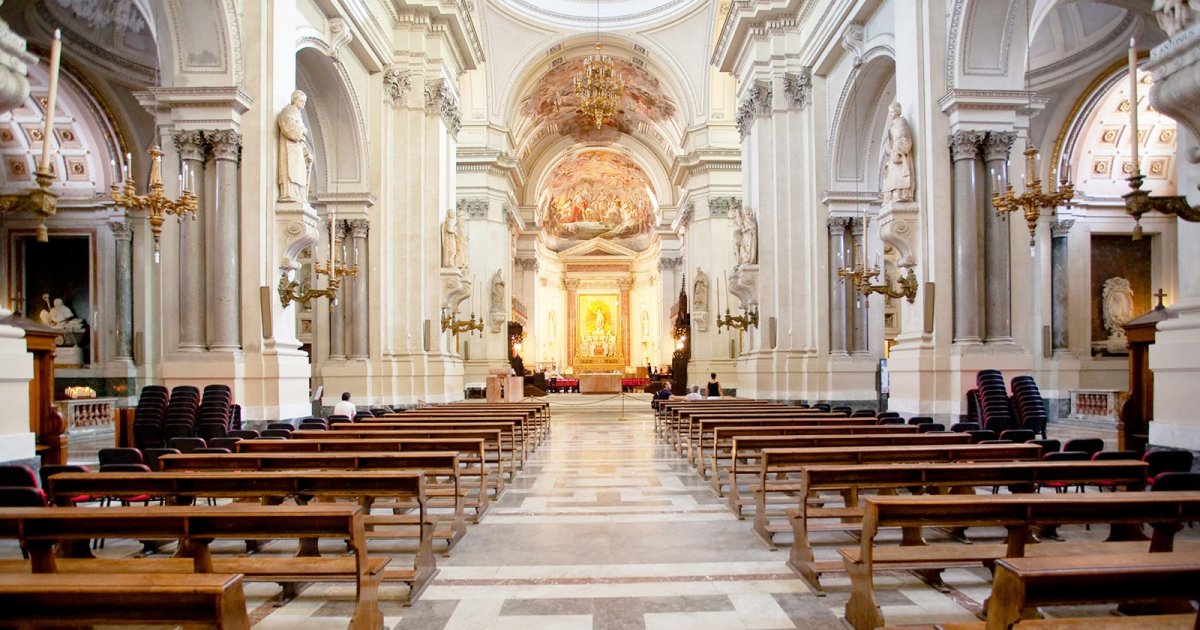CATHEDRAL, Presentation Part Ii
 Language: English / USA
Language: English / USA
I suggest you take a look at the facade; although it seems older, it was not actually completed until 1906.
It’s difficult to take in the whole facade, because it is separated from the Bishop’s Palace by a rather narrow street, but you cannot fail to be impressed by the two spectacular arches that start out from the facade, cross the street and join at the bell tower of the palace.
The facade, flanked by two towers, has a Gothic portal dating to 1534, topped by a niche in which you can admire a fifteenth-century Madonna. On the portal is a relief depicting Roger on horseback stepping on a Muslim.
Before you enter the Cathedral, I suggest you also take a look at the back. You’ll recognize the Norman structure, with an almost military appearance since the church was originally also used as a fortress, with extremely high walls topped with crenellated battlements. The elegant, Arab-inspired decorations, with splendid inlay work on the entwined arches, gives the building a slender, light appearance.
Now press pause and press play again inside the Cathedral.
In the Neoclassical, triple-nave interior, Ferdinando Fuga used solid pillars to replace the original groups of four columns, which were kept as a decorative element only, and concealed the magnificent painted wooden beam ceiling with a barrel vault. Despite the plain, austere appearance, there are some marvelous works to be admired, such as a superb holy water font in Renaissance style, which you can see near one of the entrances. It may be the work of Domenico Gagini, a sculptor from the Ticino canton, the father of a large family of artists who worked in Sicily.
There is a large brass strip on the floor that cuts the central nave in two starting from the chapel of San Francesco da Paola, with colored stone inlay work at the sides depicting the signs of the zodiac. This Meridian dates to 1801. On a bright day, you can see the light entering the Cathedral through a hole in the dome and lighting up a point on the meridian, accurately indicating the time of day.
An interesting fact: the meridian was an idea of the astronomer Piazzi who, on his return from travels in Europe, had realized that the calculation of time would have to be adapted to the systems adopted in the rest of the continent. A reform of time was thus introduced in the Kingdom of the Two Sicilies, and a meridian was created in the Cathedral to accurately indicate midday in a way that would be visible to all.



